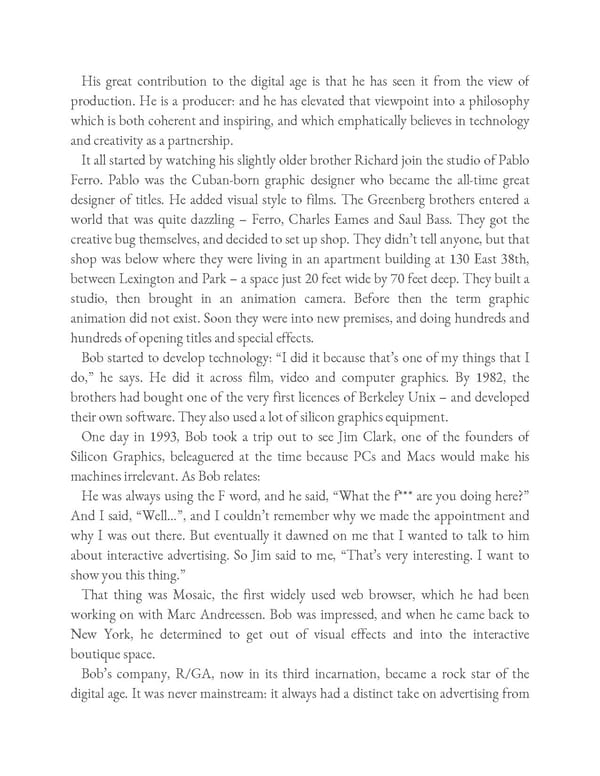His great contribution to the digital age is that he has seen it from the view of production. He is a producer: and he has elevated that viewpoint into a philosophy which is both coherent and inspiring, and which emphatically believes in technology and creativity as a partnership. It all started by watching his slightly older brother Richard join the studio of Pablo Ferro. Pablo was the Cuban-born graphic designer who became the all-time great designer of titles. He added visual style to films. The Greenberg brothers entered a world that was quite dazzling – Ferro, Charles Eames and Saul Bass. They got the creative bug themselves, and decided to set up shop. They didn’t tell anyone, but that shop was below where they were living in an apartment building at 130 East 38th, between Lexington and Park – a space just 20 feet wide by 70 feet deep. They built a studio, then brought in an animation camera. Before then the term graphic animation did not exist. Soon they were into new premises, and doing hundreds and hundreds of opening titles and special effects. Bob started to develop technology: “I did it because that’s one of my things that I do,” he says. He did it across film, video and computer graphics. By 1982, the brothers had bought one of the very first licences of Berkeley Unix – and developed their own software. They also used a lot of silicon graphics equipment. One day in 1993, Bob took a trip out to see Jim Clark, one of the founders of Silicon Graphics, beleaguered at the time because PCs and Macs would make his machines irrelevant. As Bob relates: He was always using the F word, and he said, “What the f*** are you doing here?” And I said, “Well…”, and I couldn’t remember why we made the appointment and why I was out there. But eventually it dawned on me that I wanted to talk to him about interactive advertising. So Jim said to me, “That’s very interesting. I want to show you this thing.” That thing was Mosaic, the first widely used web browser, which he had been working on with Marc Andreessen. Bob was impressed, and when he came back to New York, he determined to get out of visual effects and into the interactive boutique space. Bob’s company, R/GA, now in its third incarnation, became a rock star of the digital age. It was never mainstream: it always had a distinct take on advertising from
 Ogilvy on Advertising in the Digital Age Page 358 Page 360
Ogilvy on Advertising in the Digital Age Page 358 Page 360